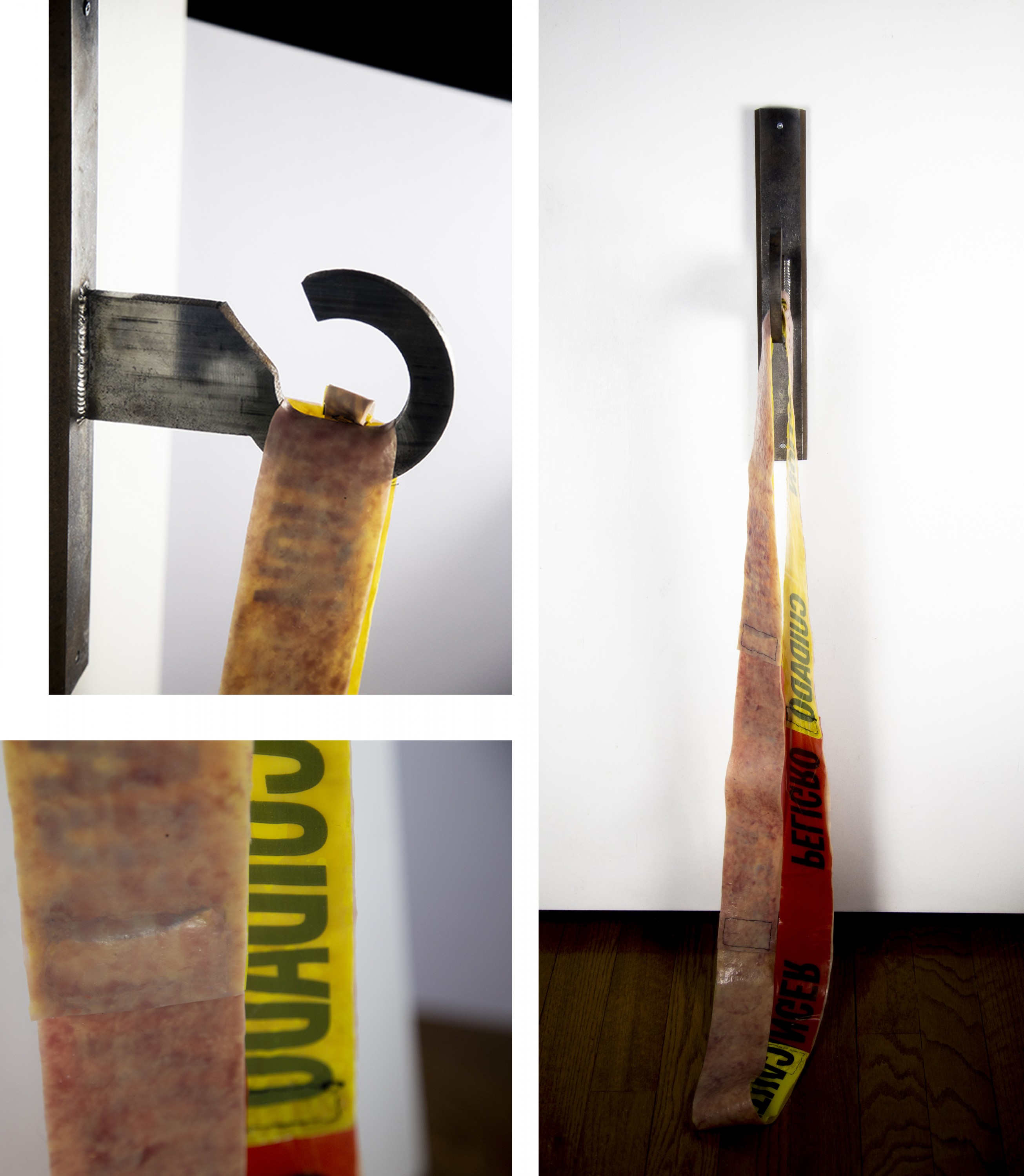Priscila Cordero Hernandez
 + Enlarge
+ Enlarge
 + Enlarge
+ Enlarge
 + Enlarge
+ Enlarge
 + Enlarge
+ Enlarge
Statement
**Systematic Exclusion**
My art practice concentrates on the idea that as individuals, we lose the sense of mortality because we become accustomed to the practical and familiar. In my artwork, I aim to reconstruct the familiar to the unfamiliar by shifting and challenging realities that depict human materiality, identity, and the effects of social restraints. Reconfiguring the familiar assists as a tool to analyze social conflicts and crises that are currently affecting our culture, promoting an emphasis on discriminatory behaviors that concern marginalized groups. The impact of these behaviors on an individual or group's identity can significantly affect our society. My fleshy sculptures, made out of silicone, enable me to manipulate the material and distort the imagery to provoke sensory experiences that concern the permeable limits of human beings. Other key components, such as scale, hardware and industrial infrastructure, aid in challenging socially cultivated ideas. My work investigates disintegrating boundaries and creating paths to connect the self to the external object. Constructing a bond where the unfamiliar and the familiar intersect becomes an invitation to reflect on corporeality, existence, and the value-potential of human beings.
My artwork is associated with my art teaching because I intend to bring awareness to my students, to elicit inquiry, identify, and analyze relevant concepts they want to explore about their lives concerning personal, historical, or social contexts. The act of exploration as an experience is key to open-minded creativity. Similarly, the investigation of materials is a vital component of my artmaking, especially by associating particular designs or adding details that give context to aspired interpretations visually depicted. The material of choice and process allows students the opportunity to take learning into their own hands. With fundamental knowledge and processes, they will be able to apply their own curiosity to produce exceptional artwork. Enduring trial and error will help students consider new strategies, perspectives, and openness to think outside the box. Experiential learning allows students to grow mentally, by associating contextual information to personal experiences, opening up room for classroom dialogue, discussions, and self-expression.
